Stars are astronomical objects consisting of a luminous spheroid of plasma held together by their own gravity.
Key Facts & Summary
- Stars are huge celestial bodies made mostly of hydrogen and helium that produce light and heat from the churning nuclear forges inside their cores.
- Aside from our Sun, stars appear as dots of light in the sky. Each and every one of them is light-years away from us and much brighter than our own star, the Sun.
- Stars are the building blocks of galaxies and in a sense life as we know it.
- Our galaxy the Milky Way contains an estimated 300 billion stars alone.
- Observations concluded that stars with high mass usually have shorter life spans. They nonetheless last for billions of years in general.
- Stars are usually birthed in hydrogen-based dust clouds called nebulae.
- Stars are classified by their spectra and their temperature. There are seven main types of stars. In order of decreasing temperature, O, B, A, F, G, K, and M. This is known as the Morgan–Keenan (MK) system.
- The majority of all stars in our galaxy and even the Universe are main-sequence stars. Our Sun is a main-sequence star, and so are our nearest neighbors, Sirius and Alpha Centauri A.
- The majority of stars, at least until now observed, are typically red dwarf stars.
- Many stars come in pairs. They are binary stars that orbit a common barycenter.
- Stars have life cycles based on their initial mass.
- Stars do not twinkle. This is usually caused by Earth’s turbulent atmosphere instead.
- As far as the human eye can tell, there are no green stars. At least, we can’t perceive them.
- With the naked eye, we can perceive around 2.000 – 2.500 stars.
As long as man could gaze into the night sky, stars have been observed, dated, and analyzed. One of the oldest star charts and surprisingly accurate charts appeared in ancient Egyptian astronomy in 1534 BC. Even supernovas were recorded since ancient times, for example in 185 AD, Chinese astronomers recorded a supernova that is now classified as SN 185.
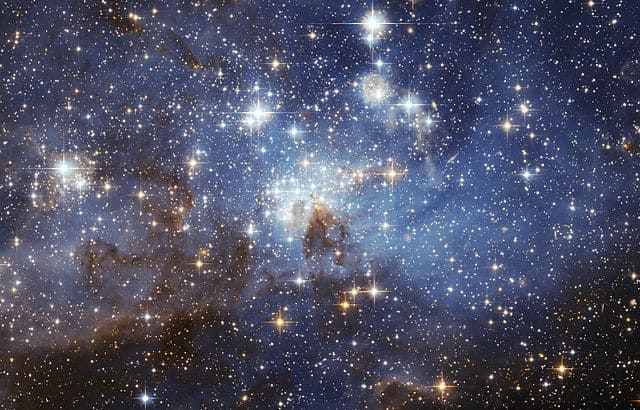
Stars have been used for celestial navigations and religious practices with many ancient astronomers believing they were immutable. They grouped the stars into constellations and used them to track planets and the inferred position of the Sun.
Later, medieval Islamic astronomers gave Arabic names to many stars that still remained used to this day. They were the first to build large observatory research institutes. In 1838, the first direct measurements of the distance of a star – 61 Cygni – were made by astronomer Friedrich Bessel using the parallax technique.
In 1913, the Hertzsprung-Russell diagram was developed and in 1921 Albert Michelson made the first measurements of a stellar diameter using an interferometer. In 1925, Cecilia Payne first proposed that stars were primarily made out of hydrogen and helium. Since then, stars have been categorized into many divisions, and many mysteries were revealed to us. The sheer variety of stars is simply overwhelming.
Formation
Stars form in huge clouds of gas and dust. Gravity causes these clouds to contract thus drawing the gas closer. As these materials accumulate in the center, density raises and pressure increases.
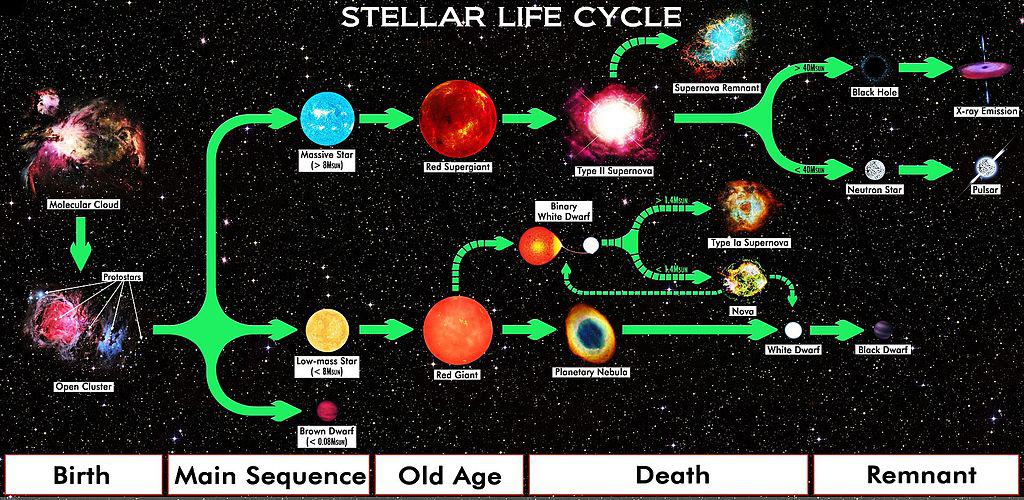
This causes the matter to heat up and glow while the mass increases. Temperatures and pressure continually grow until hydrogen can be fused. The heat generated by this nuclear fusion causes the gas to expand and when hydrostatic equilibrium is reached, the star is born. Most stars form in groups called star clusters, many are eventually ejected from these clusters.
Types of Stars - Classification
There are many star classification systems in use today, however, the Morgan-Keenan system is the easiest to understand. Stars are classified in this system using letters O, B, A, F, G, K, and M. They are classified based on their temperature the hottest is O and the coolest is M. The temperature of each spectral class is then subdivided by the addition of a number, 0 stands for the hottest while 9 for the coolest.
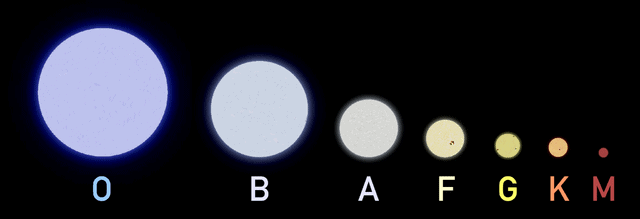
Main Sequence Stars
The main sequence stars are powered by the fusion of hydrogen into helium in their cores. About 90% of the stars in the Universe are main-sequence stars, including our sun. They usually range from one-tenth to 200 times the Sun’s mass.
Blue Stars
These types of stars are quite rare with spectral types of either O or B. Their temperatures are around 30.000 K, with luminosities around 100 to 1 million times that of the Sun. They usually have a mass around 2.5 to 90 times that of the sun and last about 40 million years.
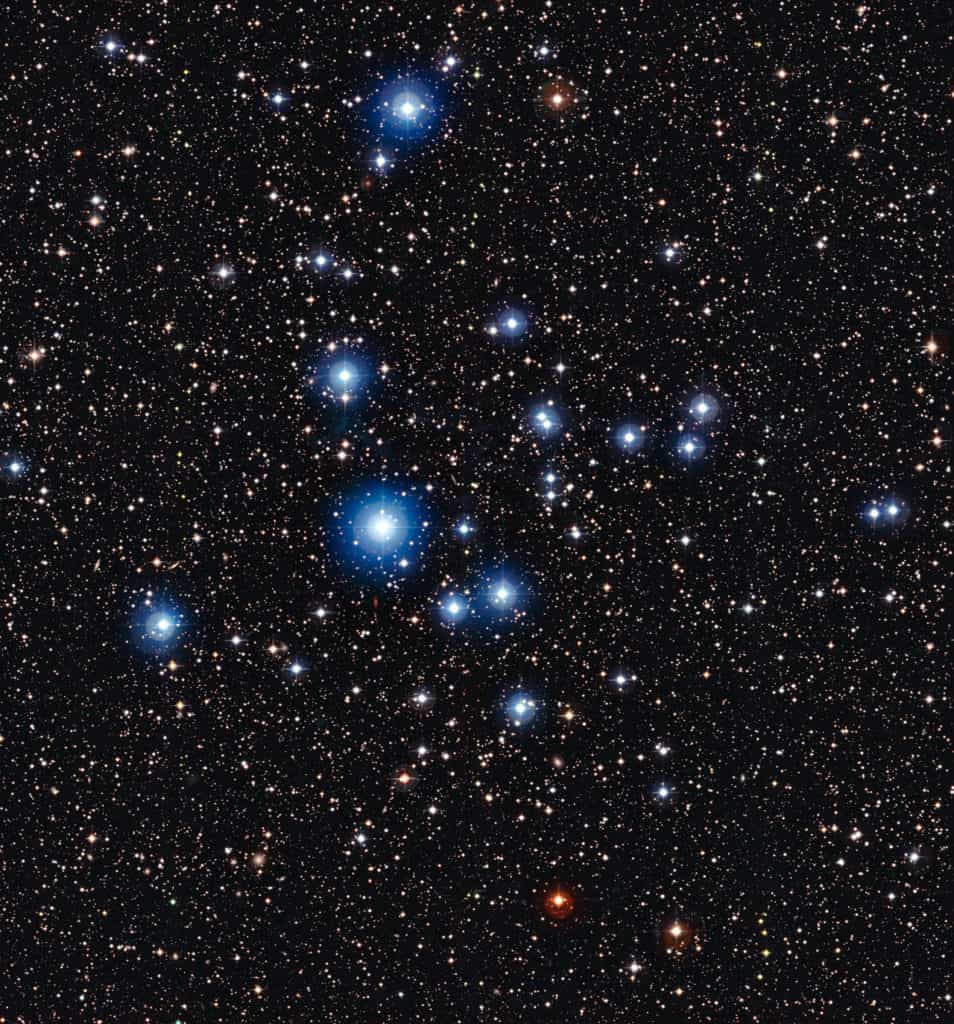
They usually reside in the arms of spiral galaxies and are characterized by the strong Helium-II absorption lines in their spectra. They have weaker hydrogen and neutral helium lines in their spectra than B-type stars.
Because of their mass and temperature, they have short life spans that end in a supernova explosion resulting in either black holes or neutron stars. Some examples of blue stars: Delta Circini, V560 Carinae, Theta1 Orionis C.
Yellow Dwarfs
Yellow dwarfs have a 10% prevalence, with a spectral type G. They have temperatures between 5.200 K to 7.500 K, with luminosities around 0.6 to 5.0 that of the Sun. They have a mass of around 0.8 to 1.4 that of the sun and last about 4 to 17 billion years.

These stars are mistakenly referred to as G-type stars. Our Sun is a G-type star, but it is in fact white. G-type stars convert hydrogen into helium and usually evolve into red giants when their hydrogen fuel is exhausted. Some examples are: Alpha Centauri A, Tau Ceti.
Orange Dwarfs
These stars have a prevalence of around 10%, with a spectral type K. They have temperatures between 3.700 K to 5.200 K, with luminosities around 0.08 to 0.6 that of the Sun. They have a mass of 0.45 to 0.8 that of our sun and last around 15 to 30 billion years.
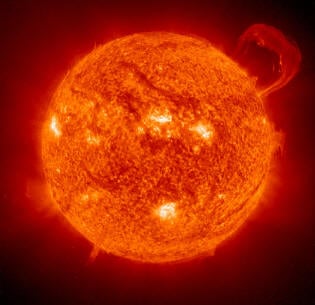
They emit less UV radiation and remain stable for long periods of time making them very favorable for exoplanets that might reside in their habitable zone. They are about four times as common as G-type stars. Some examples of orange dwarf stars are: Alpha Centauri B, Epsilon Indi.
Red Dwarfs
These stars have a prevalence of around 73%, with either spectral types K and M. Their temperatures are usually around 4.000 K, with luminosities around 0.0001 to 0.8 that of the Sun. They have a mass of 0.08 to 0.45 that of our sun and last around several trillion years.
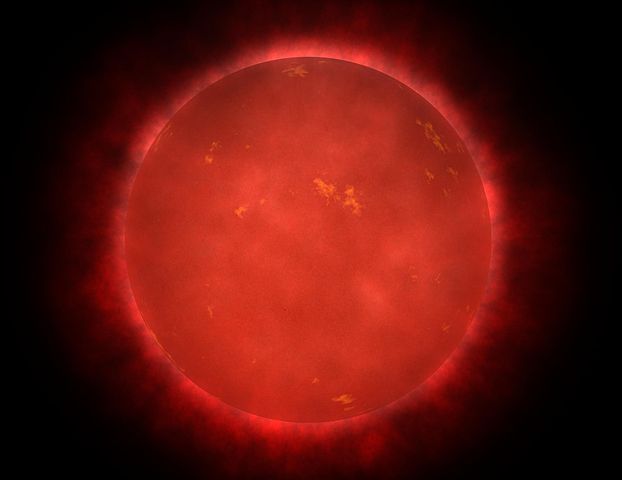
They account for the bulk of the Milky Way’s stellar population, though they are very dim. If red dwarfs are more massive than 0.35 solar masses, they convert hydrogen into helium both in their core and throughout. Because of this, the nuclear fusion process is slowed down and even prolonged. They live for so long that no red dwarf has reached an advanced stage of evolution since the Universe was created. Some examples are: Proxima Centauri, Trappist-1.
Giants and Supergiants
When a star runs out of hydrogen it begins to burn its helium thus it transforms into either a giant or supergiant star. Its core collapses and it gets hotter, resulting in the outer layer to expand outwards. Stars that are either low or medium in mass evolved into red giants. Stars with high-mass, around 10+ times bigger than the Sun, become red supergiants.
During periods of slow fusion, the star can contract itself and become a blue supergiant. This color is usually present when temperatures are spread over a small surface area, making them hotter. Oscillations between red and blue can also occur.
Blue Giants
These stars are very rare, their spectral types are O, B, and A. Their temperatures are usually around 10.000 K to 33.000+ K, with luminosities around 10.000 that of the Sun. They have a mass of 2 to 150 that of our sun and last around 10 to 100 million years.
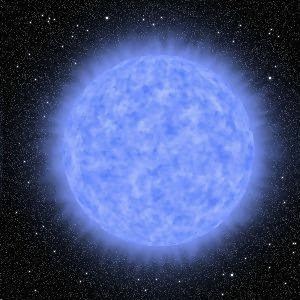
There are a wide variety of stars termed blue giants. Many stars with luminosity classifications of III and II are referred to as blue giants merely out of preference. However, the true blue giants have temperatures above 10.000 K. Some examples are: Xi Persei, Meissa, Iota Orionis.
Blue Supergiants
These stars are also rare, spectral type OB. Their temperatures are around 10.000 K to 50.000 K, and luminosities around 10.000 to 1 million times that of the Sun. They have a mass of around 20 to 1.000 that of our sun and live very short lives, around 10 million years.
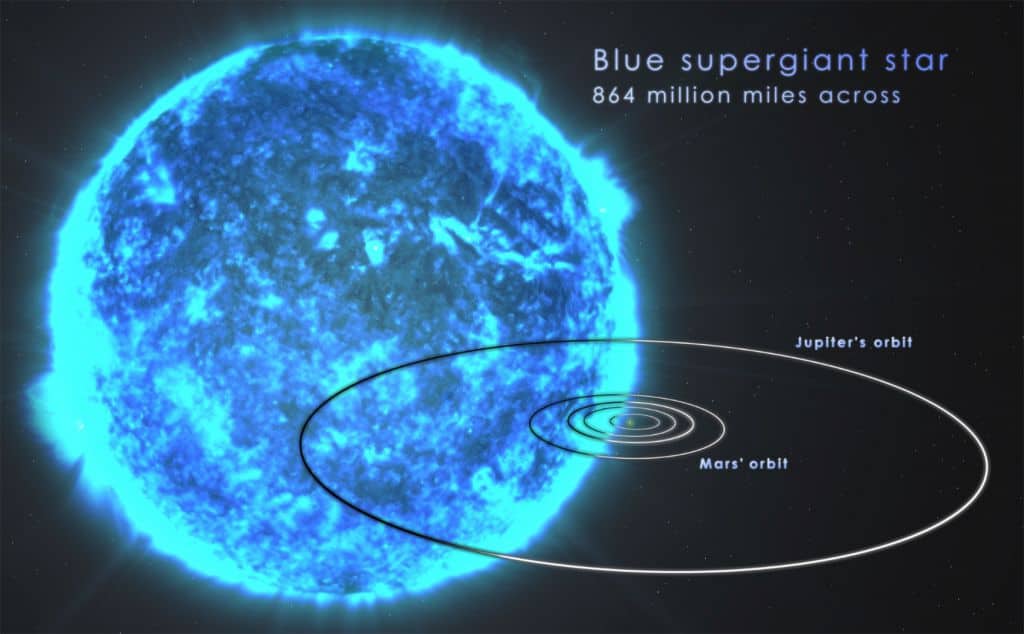
Scientifically known as OB supergiants, these stars have luminosity classifications of I, and spectral classifications of B9. They are smaller than red supergiants and usually leave their main sequence in only a few million years. Because of their mass, they quickly burn their hydrogen supplies. Some stars evolve directly into Wolf-Rayet stars, jumping over the normal blue supergiant phase. Some examples are: UW Canis Majoris, Rigel, and Tau Canis Majoris.
Red Giants
These stars have a prevalence of around 0.4%, spectral types M, K. They have temperatures of around 3.300 to 5.300 K, and luminosities around 100 to 1.000 times that of the Sun. They have a mass of about 0.3 to 10 and live around 0.1 to 2 billion years.
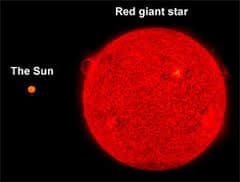
They are much smaller than red supergiants and much less massive. The RBG-branch is the most common, with hydrogen still being fused into helium, but in a shell around an inert helium core. The red-clump giants use helium and fuse it into carbon while the AGB branch burns their helium in a shell around a degenerate core of carbon and oxygen. Some examples are: Aldebaran, Arcturus.
Red Supergiants
These stars have a prevalence of around 0.0001%, spectral types K, M. They have temperatures of around 3.500 to 4.500 K, and luminosities around 1.000 to 800.000 times that of the Sun. They have a mass of about 10 to 40 that of our sun and live around 3 to 100 million years.
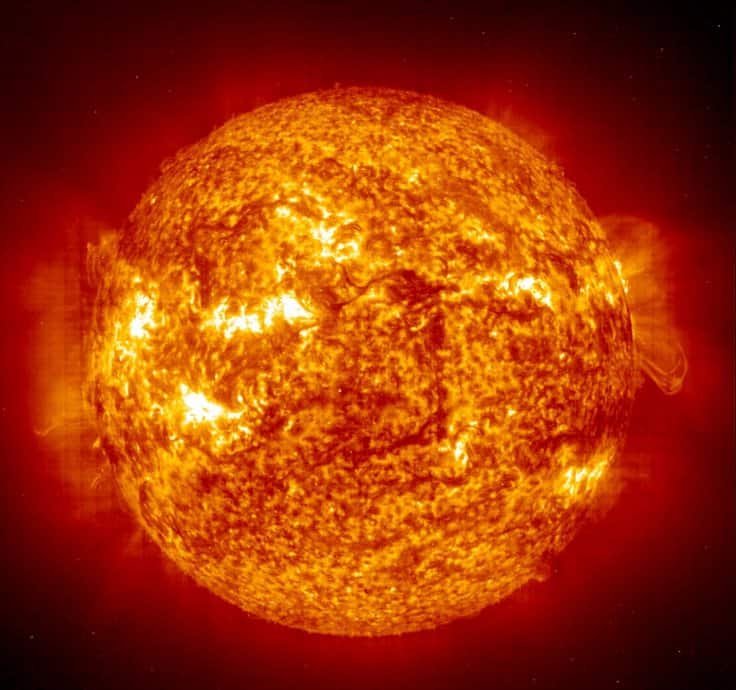
These stars have exhausted their supplies of hydrogen at their cores. Because of this, their outer layers expand hugely as they evolve off the main sequence. They are among the biggest stars in the universe, though they are not among the most massive or luminous. Some red supergiants which still can create heavy elements eventually explode as type-II supernovas. Some examples are: Antares, Betelgeuse, Mu Cephei.
Dead Stars
Dead stars no longer have fusion processes taking place in their cores.
White Dwarfs
These stars have a prevalence of around 0.4%, spectral type D. They have temperatures of around 8.000 to 40.000 K, and luminosities around 0.0001 to 100 times that of the Sun. They have a mass of about 0.1 to 1.4 that of our sun and live around 100.000 to 10 billion years.
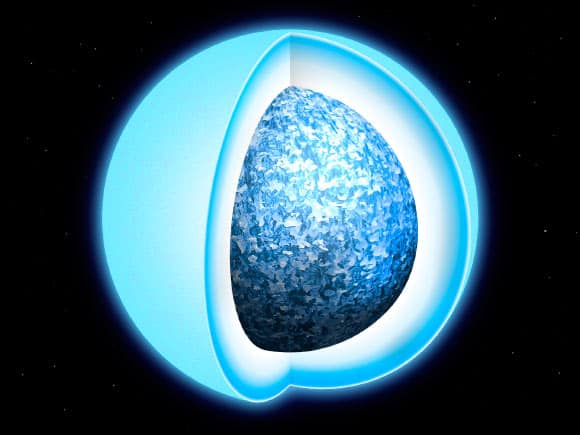
These stars no longer produce energy to counteract their mass. Theoretically, they cannot exceed 1.4 solar masses. Some examples are: Sirius B, Procyon B, Van Maanen.
Neutron Stars
These stars have a prevalence of around 0.7%, spectral type D. They have temperatures of around 600.000 K and very low luminosities. They have a mass of about 1.4 to 3.2 that of our sun and live around 100.000 to 10 billion years.
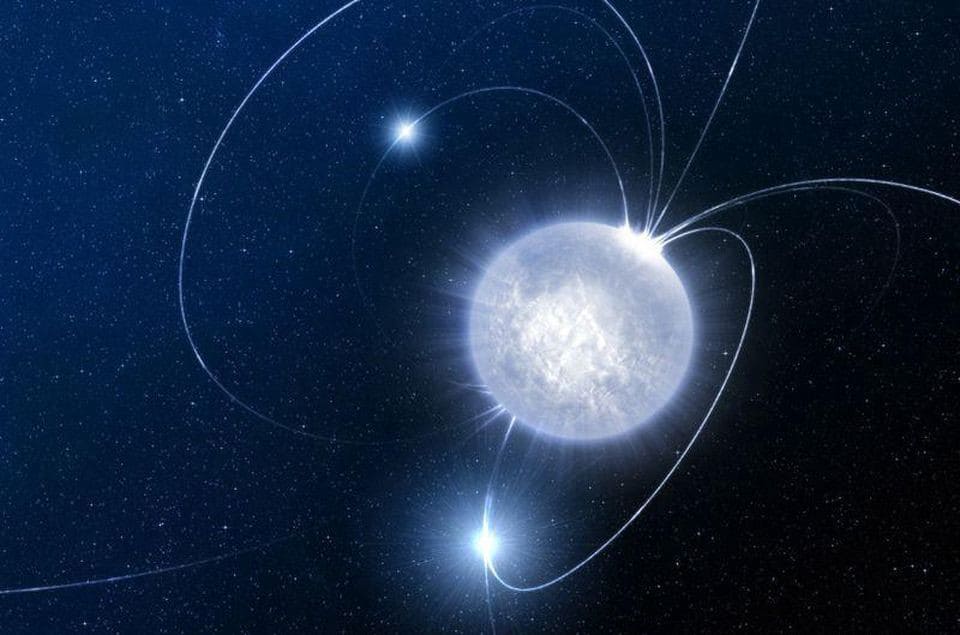
Neutron stars are basically the collapsed cores of massive stars that were compressed beyond the white dwarf stage during a supernova explosion. They consist of neutron particles that are a bit more massive than protons with no electrical charge. They can further collapse into black holes if they have more than 3 solar masses. Only neutron stars that have high spin rates and more than 3 solar masses may resist this process. Some examples are: PSR J0108-1431, PSR B1509-58.
Black Dwarfs
These stars are more hypothetical in nature. They are theorized to be white dwarfs that have radiated away all their leftover heat and light. Since white dwarfs have relatively high life spans, no black dwarfs had enough time to form yet. If such stars would form, this would occur after our Sun will die.
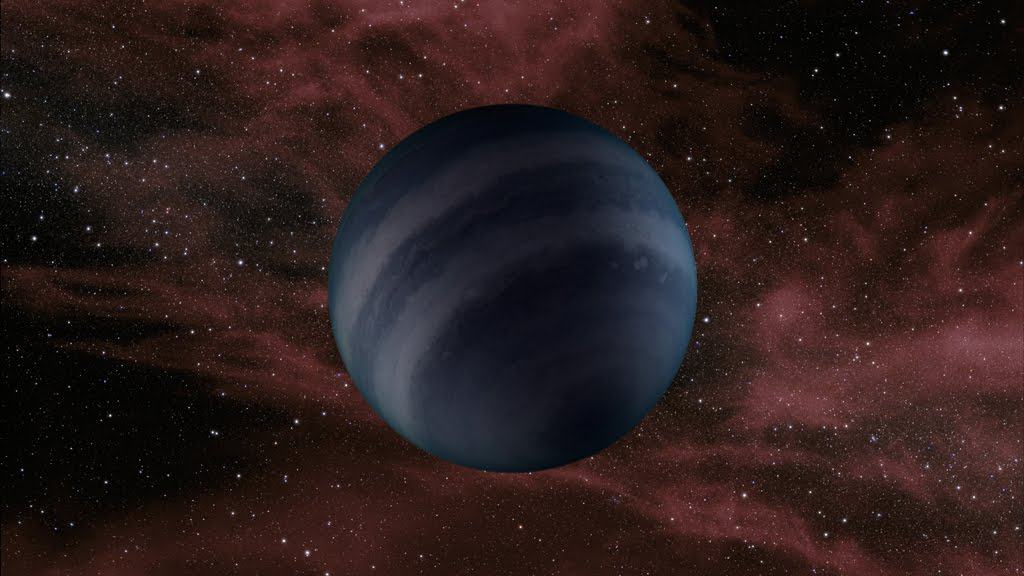
Black Holes
Small stars may become white dwarfs or neutron stars but stars with high masses become black holes after a supernova explosion. Since the remnant has no outward pressure to oppose the force of gravity, it will continue to collapse into a gravitational singularity and eventually become a black hole.
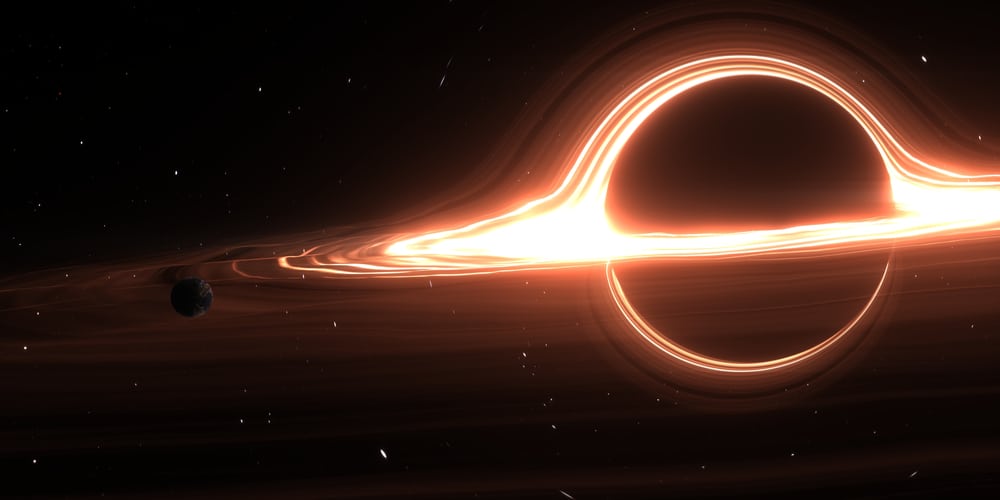
Such an object is so strong that not even light can escape from it. Examples of such objects are: Cygnus X-1, Sagittarius A.
Failed Stars
Failed stars are celestial objects that do not have sufficient mass to ignite and fuse hydrogen gas. Therefore, they do not shine. Brown dwarfs are typically known as failed stars.
Brown Dwarfs
These stars have a prevalence of around 1% to 1.0%, and range between spectral types M, L, T, Y. They have temperatures of around 300 K to 2.800 K and very low luminosities. They have a mass of about 0.01 to 0.08 that of our sun and live for possibly trillions of years.
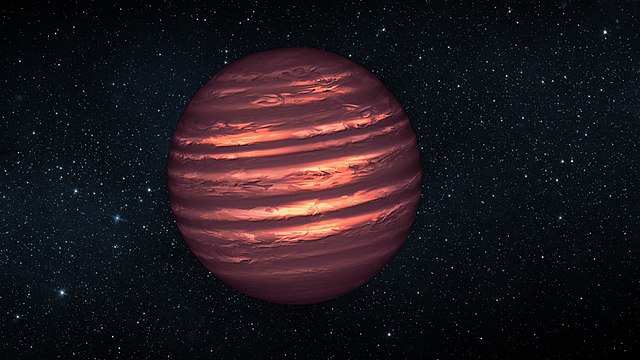
They usually fill the gap between the most massive gas planets and the least massive stars. They have a mass range of around 13 to 80 Jupiter masses. They mostly don’t emit visible light. Some examples are: Gliese 229 B, Luhman 16.
Did you know?
- The most distant individual star detected is a blue supergiant named Icarus. It is around 14 billion light-years away from Earth.
- The most massive and luminous star ever discovered is a Wolf-Rayet star named R136a1. It has around 315 solar masses and 8.7 million solar luminosity.
- The largest current known star is the red supergiant VY Canis Majoris. It is about 17±8 times the mass of the Sun.
- HE 1523-0901 is the oldest known star in our galaxy, the Milky Way. The star's estimated age is about 13.2 billion years. It is a red giant star.
- Any star that can be viewed from Earth is seen in the past. Sirius, for example, has the appearance of 8 years older.
- In the night sky, there are around 9.096 stars visible to the naked eye. Between 2.000 to 2.500 can be seen at a time.
- If Jupiter would be around 79 times more massive, it would turn into a star.
Sources:
Image source:
- https://upload.wikimedia.org/wikipedia/commons/thumb/6/62/Starsinthesky.jpg/640px-Starsinthesky.jpg
- https://upload.wikimedia.org/wikipedia/commons/thumb/4/47/Star_Life_Cycle_Chart.jpg/1024px-Star_Life_Cycle_Chart.jpg
- https://upload.wikimedia.org/wikipedia/commons/thumb/d/d7/Dwarf_Stars.png/640px-Dwarf_Stars.png
- https://cdn.mos.cms.futurecdn.net/cswv4rVUWCiF8qrnU7kLnH.jpg
- https://en.wikipedia.org/wiki/G-type_main-sequence_star#/media/File:Sun_white.jpg
- http://www.astronoo.com/images/soleil/soleil-tempete_medium.jpg
- https://upload.wikimedia.org/wikipedia/commons/thumb/7/74/RedDwarfNASA.jpg/622px-RedDwarfNASA.jpg
- https://d3eh3svpl1busq.cloudfront.net/zfWkOoWegztfxOAooCWGyDJnFvhhYkVQ/assets/static/optimized/wp-content/uploads/2019/04/3e0e32d96c7eed0881087dfdd4f5b562.01-Zeta-Puppis.jpg
- https://cdn.mos.cms.futurecdn.net/8k84cVVWo5FzBC7oXMdHNJ-1024-80.jpg
- https://d2jmvrsizmvf4x.cloudfront.net/IQOJuCcVSzyvI1wNilb4_red-star-size.jpg
- https://d.ibtimes.co.uk/en/full/1633311/antares-red-supergiant.jpg?w=736&f=481d17936d6e486c0f633fb985219db0
- http://cdn.sci-news.com/images/2019/01/image_6805_1-White-Dwarf-Crystals.jpg
- https://miro.medium.com/max/1320/1*fvTXTnhNEHu0uAJUGzxzNA.jpeg
- https://sites.google.com/site/thelifecycleofthestars/_/rsrc/1416636740784/black-dwarf/brown-dwarf1.jpg
- https://specials-images.forbesimg.com/imageserve/1178748615/960x0.jpg?fit=scale[16.]
- https://upload.wikimedia.org/wikipedia/commons/thumb/e/e0/Artist%E2%80%99s_conception_of_a_brown_dwarf_like_2MASSJ22282889-431026.jpg/640px-Artist%E2%80%99s_conception_of_a_brown_dwarf_like_2MASSJ22282889-431026.jpg
